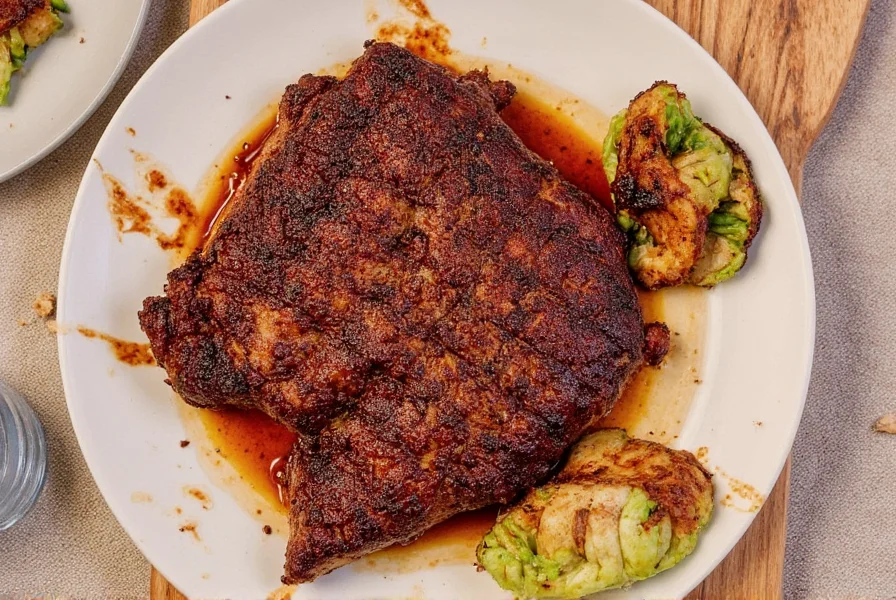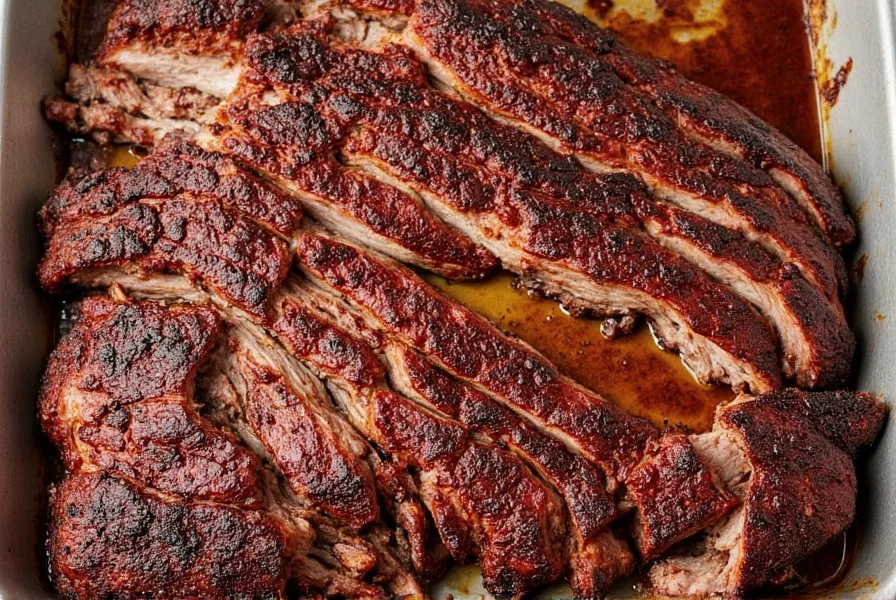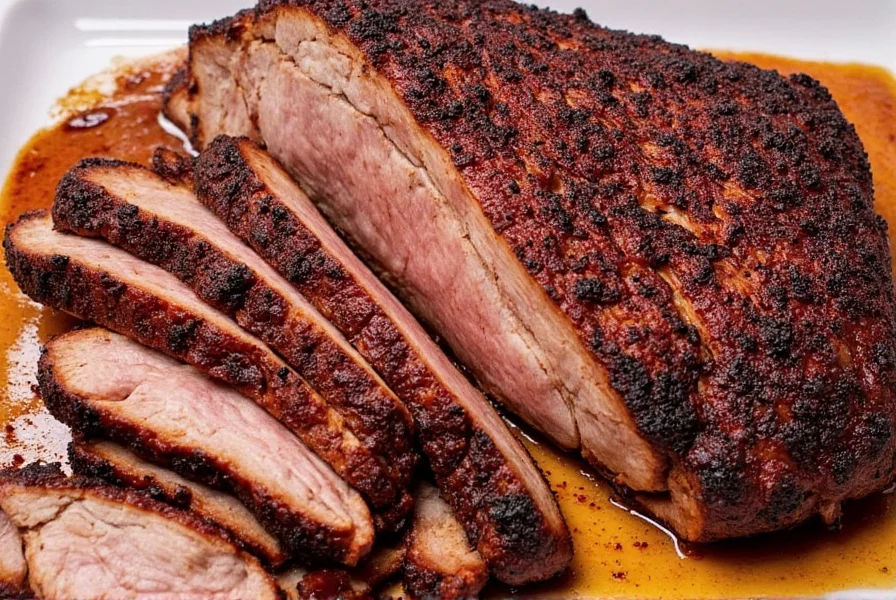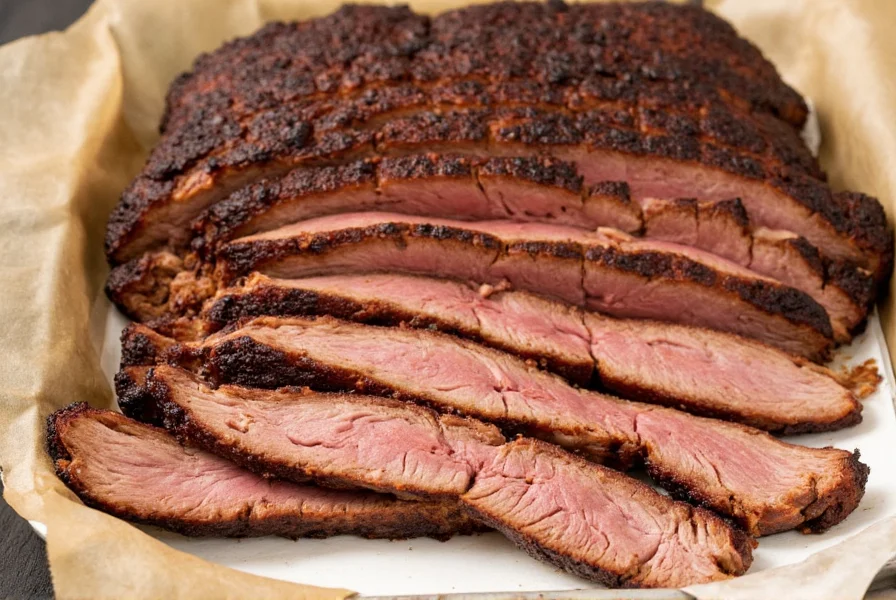
| Cook Time | Prep Time | Total Time | Servings |
|---|---|---|---|
| 10-12 hours | 30 minutes | 11-13 hours | 10-12 people |
Perfect Oven Brisket Recipe: Step-by-Step Guide
Looking for a foolproof oven brisket recipe that delivers tender, flavorful results without a smoker? This comprehensive guide gives you exact cooking times, temperatures, and professional techniques for perfect oven brisket every time. Skip to the complete recipe below or read on for expert tips that make the difference between good and great brisket.
What You'll Need
Ingredients
- 1 whole packer brisket (10-14 lbs), preferably USDA Choice grade
- ¼ cup coarse black pepper
- ¼ cup kosher salt
- 2 tbsp sweet paprika
- 2 tbsp brown sugar (optional)
- 1 tbsp garlic powder
- 1 tbsp onion powder
- 2 cups beef broth or water
The Complete Oven Brisket Recipe
Step-by-Step Instructions
- Prepare the brisket: Trim the fat cap to about ¼-inch thickness, leaving a uniform layer for flavor and moisture.
- Create the rub: Mix all dry ingredients in a bowl. For Texas-style, use just salt and pepper (1:1 ratio).
- Apply the rub: Generously coat all sides of the brisket, pressing the mixture into the meat.
- Set up your oven: Preheat to 275°F (135°C). Place brisket on a wire rack inside a roasting pan.
- Add moisture: Pour beef broth or water into the bottom of the pan (not over the meat).
- Cook covered: Seal tightly with heavy-duty foil or use a roasting pan with a tight-fitting lid.
- Cook time: Bake for approximately 1 hour per pound (e.g., 12 hours for a 12-pound brisket).
- Wrap (Texas Crutch): After 3-4 hours, when a dark crust has formed, wrap tightly in butcher paper or foil.
- Check for doneness: Brisket is ready at 195-205°F internal temperature and passes the probe test (thermometer slides in like butter).
- Rest: Let rest, wrapped, for 1-2 hours before slicing against the grain.
Why This Oven Brisket Method Works
Unlike traditional smoking, oven brisket delivers consistent results with minimal equipment. The secret lies in precise temperature control and moisture management - your standard kitchen oven can replicate the "low and slow" technique that transforms tough connective tissues into melt-in-your-mouth tenderness.
Essential Spice Blends for Oven Brisket
| Spice | Flavor Role | Recommended Use |
|---|---|---|
| Coarse Black Pepper | Pungent, earthy kick | Base layer, especially for Texas-style |
| Sweet Paprika | Color and subtle sweetness | Add depth and visual appeal |
| Brown Sugar | Caramelization & bark development | Use sparingly unless going Kansas City style |
| Garlic Powder | Umami boost | Mixed into dry rubs |
| Onion Powder | Savory backbone | Enhances meaty flavor profile |

Critical Oven Brisket Tools
While you don't need specialized equipment, these tools ensure perfect results:
| Tool | Function | Top Recommendation |
|---|---|---|
| Digital Meat Thermometer | Ensures perfect doneness without guessing | Maverick ET-733A |
| Wire Rack + Roasting Pan | Lifts meat for even airflow and browning | All-Clad Roasting Set |
| Cast Iron Dutch Oven | Retains moisture and adds rustic charm | Le Creuset 9 Quart |
| Sharp Carving Knife | For clean slices against the grain | Zwilling J.A. Henckels |

Brisket Buying Guide
What to Look for When Buying Brisket
- Marbling: Look for even fat distribution — more marbling = more flavor
- Flat vs. Point Cut: Flat is leaner and easier to slice; point has more connective tissue and flavor
- Weight: Aim for 10–14 lbs for a crowd or leftovers
- Grade: USDA Choice or higher is ideal
Perfect Pairings for Oven Brisket
Best Sides and Sauces
- Coleslaw – Provides refreshing contrast to rich meat
- BBQ Baked Beans – Complements smoky flavors
- Cornbread – Perfect for soaking up juices
- Texas Mop Sauce – Vinegar-based and tangy
- Kansas City BBQ Sauce – Sweet, smoky, and thick
Proven Solutions to Common Oven Brisket Problems
Why Your Oven Brisket Might Be Failing
- Tough brisket: Not cooked long enough for collagen conversion (needs 195-205°F internal temp)
- Dry results: Oven temperature too high (stay between 225-275°F)
- Poor bark formation: Not enough salt in rub or insufficient initial cooking time unwrapped
- Inconsistent results: Not using a reliable thermometer (non-negotiable equipment)
Expert Oven Brisket FAQ
How long does it take to cook brisket in the oven?
Oven brisket typically requires about 1 hour per pound at 275°F. A 12-pound brisket would need approximately 12 hours. However, time alone isn't the best indicator of doneness. Always check for tenderness using the probe test (when a thermometer or skewer slides in with no resistance) rather than relying solely on time.
What's the ideal oven temperature for brisket?
The sweet spot for oven brisket is between 225°F and 275°F. Lower temperatures (225°F) take longer but can yield slightly more tender results, while 275°F is a good balance that most home ovens can maintain consistently. Temperatures above 300°F risk drying out the meat before the connective tissues fully break down.
Do I need to wrap my brisket when cooking in the oven?
Yes, wrapping (known as the "Texas Crutch") is highly recommended. After 3-4 hours of cooking, when the brisket has developed a nice crust, wrap it tightly in butcher paper or aluminum foil. This traps moisture, speeds up the cooking process, and helps the meat push through the "stall" phase where temperature stops rising temporarily.
How do I know when my brisket is done?
Brisket is done when it reaches an internal temperature of 195-205°F AND passes the probe test. Insert a thermometer or skewer into the thickest part—it should slide in with little to no resistance, like going through butter. The meat should feel jiggly when nudged. Remember that temperature will rise 5-10 degrees during resting.
Why Oven Brisket Is Worth Mastering
You don't need expensive equipment to create remarkable brisket. This oven method delivers consistent, tender results with minimal guesswork. The key is understanding how low temperatures gradually break down connective tissues while preserving moisture. Whether you're feeding a crowd or cooking for family, this technique produces restaurant-quality results that will have everyone asking for your secret—hint: it's mostly patience and precision.











 浙公网安备
33010002000092号
浙公网安备
33010002000092号 浙B2-20120091-4
浙B2-20120091-4